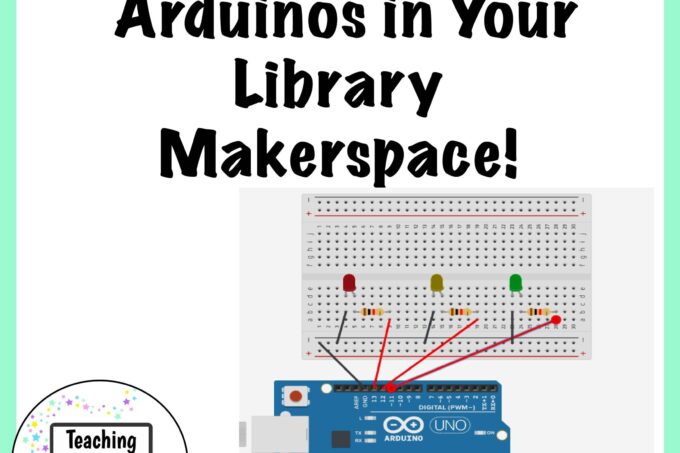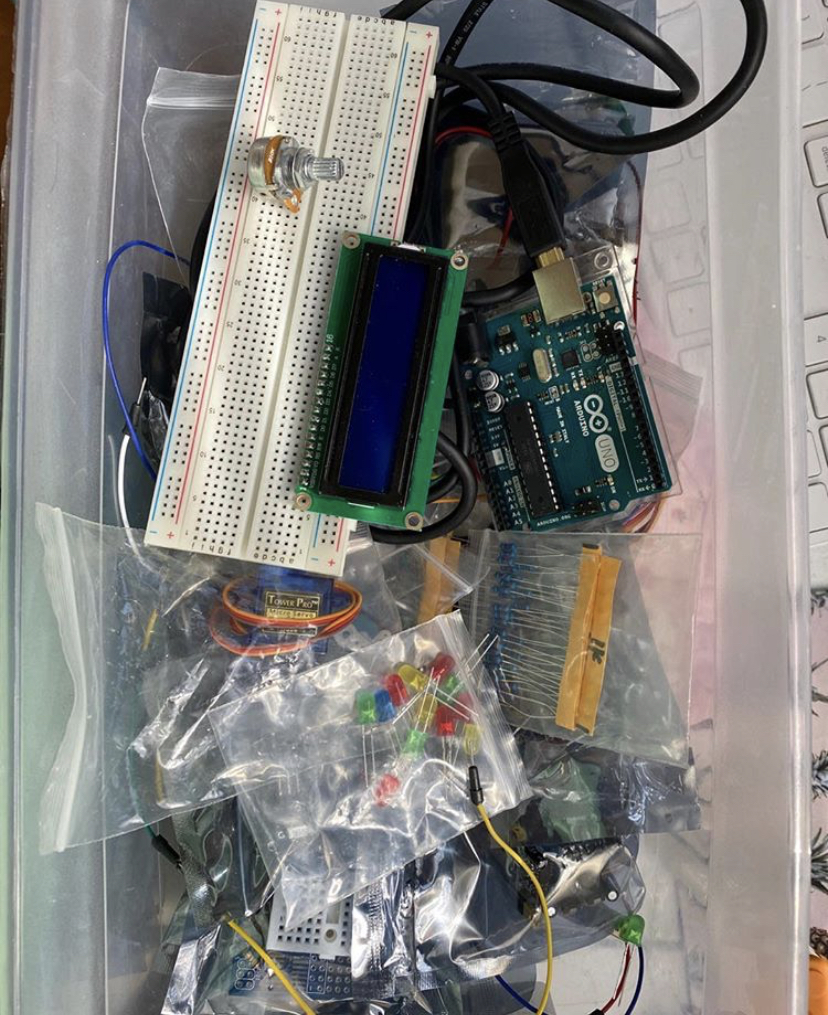

This is the Arduino kit I purchased about 3 years ago. I was so excited. This was going to be great addition to our library makerspace. I had never laid eyes on an Arduino before it arrived, and I am not a programmer. I searched online for what I thought was a simple project. After about an hour of trying, I gave up. I was so frustrated. I packed the pieces back in the box and declared that no one created Arduino projects for beginners. They were all evidently written by programmers who didn’t know how to explain to us “lay folk” what to do.
So, I exaggerated a little. Ok, ok – a lot! I know I shouldn’t have given up so easy, but I did. It took me about a year and finding the right video to get started. Turns out that first “simple” project I picked out was by no means simple. But hey, you don’t know what you don’t know, right?
Now I know better. I also know that an Arduino is an amazing tool to have in your makerspace. Students can start by creating a simple blinking light and move on to create all sorts of inventions. They are only limited by their imagination.
So, Why an Arduino?
- You turn students into engineers. I’m all for coding tools like Spheros, Dash and Dots, etc. They really help students to learn basics and the logic needed to perform tasks. They can do amazing things. But in the end, they roll. They may blink, change colors, and power other objects, but still, they roll. With an Arduino, students are building circuits. They are following diagrams to make something. They are using wires, LEDs, servos, sensors, screens, remotes, and much more to create and invent – to maybe invent something that has never be created before.
- Students really learn how things work. There is nothing like building something from scratch to really learn how it works and operates. When students use Arduinos to build and design prototypes of new inventions, they learn how to put things together, to design it for strength or movement, to manipulate code and make it do what they want it to do.
- They see the design engineering process in action. As students build items with the Arduino, they learn to create their plan, build, test, fix mistakes, redesign, retest, and so on. They want to see their invention work.
- Students see that they can! Many students in rural areas aren’t afforded the opportunity to have family, friends, etc., who work for big tech companies. They don’t see these opportunities around them on a daily basis to know that a career in a technical field is possible. When provided the opportunity to explore and use the Arduino, they can actually see themselves creating and programming things that work. Two of my favorite quotes from teaching students how to use Arduinos are: “Hey, I’m really good at this!” and “My geniousness worked!”
I’m still by no means an expert in Arduino and programming. I am terribly far from it. I have learned how to create simple challenges and activities to help students learn more about the Arduino and how to get started. I am a middle school librarian. If you know anything about middle schoolers, it’s that it can be hard to get a genuine reaction from them when doing schoolwork. That’s why I love teaching them how to use the Arduino. When their LED lights up and blinks for the first time, their face lights up. If I’m not by their table when it happens, I hear, “It worked!”, from across the room.
You don’t even have to spend money to get started with Arduinos. You can still help your students learn using the virtual Arduino found under Circuits at Tinkercad.com. Best of all, it’s FREE!
Do you need help getting started? I’ve created 12 Task Cards to help you learn to use LEDs with the Arduino. The Teacher’s Guide will provide you with sample code and wiring diagrams to help you teach your students.
Learn more about setting up a makerspace in your library in my article: Library Makerspaces: They Will Build it if you Create a Space.
